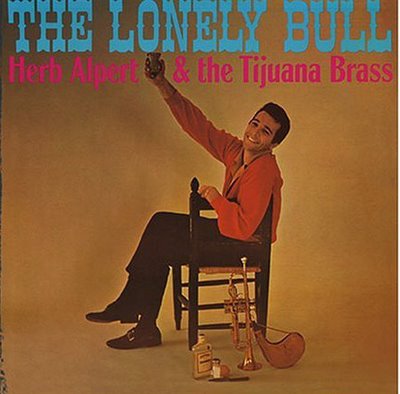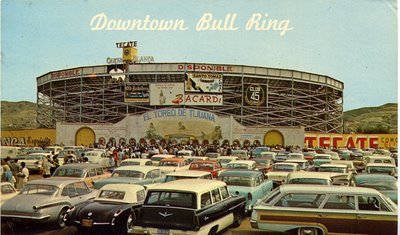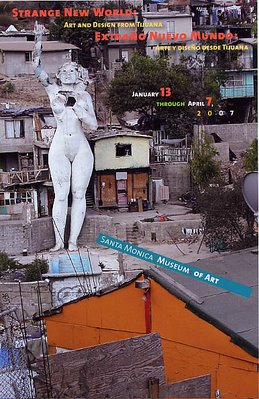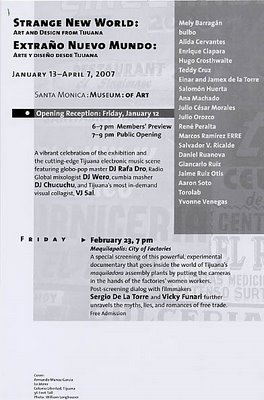Author: Rene
Desarticulando la Memoria – El Toreo de Tijuana 1957 – 2007
1. There is no architecture without action, no architecture without events, no architecture without program
2. By extension, there is no architecture without violence.
Bernard Tschumi, Architecture and Disjunction, MIT,Press. 1984
¿Por que se condena al Toreo de Tijuana a la pena de muerte, acaso será por su vejez? ¿Acaso es un crimen vivir más de 70 años como artefacto histórico de la ciudad? Según las autoridades, la estructura ya cumplió su función y por eso tendrá que ser desmantelado, dejando a la ciudadanía aceptar que la única función de un edificio es su estabilidad estructural y no la relación histórica urbana que se creó con el tiempo entre ciudad e inmueble. Y si su función estructural es obsoleta (que en gran parte lo dudo por su construcción de acero) no habría quienes (Colegio de Arquitectos e Ingenieros) pudiesen hacer una revisión y adaptación de la estructura para su rehabilitación.
Bertrand Lemoine, Eiffel ,Stylos, España 1986
Alpert set up a small recording studio in his garage and was overdubbing a tune called “Twinkle Star” when, during a visit to Tijuana, Mexico, he happened to hear a mariachi band while attending a bullfight. Following the experience, Alpert recalled that he was “inspired to find a way to musically express what [he] felt while watching the wild responses of the crowd, and hearing the brass musicians introducing each new event with rousing fanfare.” Alpert adapted the trumpet style to the tune, mixed in crowd cheers and other noises to create ambiance, and renamed the song, “The Lonely Bull.” He paid out of his own pocket to press the record as a single, and it spread through radio DJs until it caught on and became a Top Ten hit in 1963. He followed up quickly with an album of “The Lonely Bull” and other titles.
El toreo fue parte del trío turístico (hipódromo, toreo, jailai) que en la segunda década del siglo XX representaba la oferta cultural de la ciudad. Tijuana representada por el juego y el espectáculo de hombre contra bestia, bestia contra bestia y hombre contra hombre. Su fachada es singular en el sentido de que no existe, la estructura se penetra para poder entrar – el toreo es un interior al aire libre. Su forma circular es la más próxima semejanza a la real urbis romana, política-espacial. Aparte de la nostalgia que me produce la destrucción del toreo, me cuestiono su razón y, quizás ya muy tarde, quiero entender cuál es la relación semiótica con la sociedad y que labor jugó en la socialización de la misma. Al final no me queda mas que reflexionar sobre estas dudas y mantenerme atento de que no le pase lo mismo al Jai Alai.
Aqui es Tijuana en MONU -Magazine on Urbanism
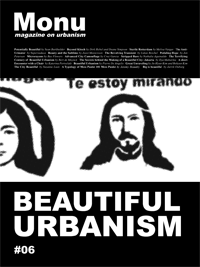 Monu is a newly founded magazine on urbanism based in Rotterdam, New York City, Berlin and Kassel. Monu will be a forum for young writers, designers, photographers etcthat are working on urban topics
Monu is a newly founded magazine on urbanism based in Rotterdam, New York City, Berlin and Kassel. Monu will be a forum for young writers, designers, photographers etcthat are working on urban topics
Acaba de salir una reseña de Aqui es Tijuana/Here is Tijuana en una revista de urbanismo con representacion en Rotterdam, Nueva York, Berlin, y Kassel – escrita por Jason Rebillot maestro en la Universidad de Colorado, facultad de arquitectura. En Diciembre visite a Rebillot en Denver para le presentación final de su taller de diseño – Border Studio.
by Fiamma Montezemolo, Rene Peralta, and Heriberto Yepez
Here is Tijuana presents a graphical and textual analysis of the
Mexican city of Tijuana, which sits tightly against the U.S. border
and the city of San Diego. This transnational ‘metroplex’, bisected
by a 10-ft. high steel wall, has emerged in recent years as an urban
research laboratory for many academics and practitioners on both
sides of the border; of particular interest to them are the immediate
socio-economic, political and ecological tensions and exchanges
across the wall. For this reason, a multi-disciplinary triad of coeditors
initiated this project as an anthropologist (Montezemolo),
an architect (Peralta) and a writer (Yepez). Although focusing primarily
on Tijuana and its morphological and procedural modes of
operation, the book never strays far from the discourse surrounding
the complexity of economic and cultural exchanges between the
city and its neighbor to the north.
Photographs, statistics, artwork, and literary fragments comprise
the majority of the book’s content. Organized according to three
geographic themes (Avatars, Desires, and Permutations), Here is
Tijuana attempts to present the city in a light other than that of the
predominant view, which has been informed largely by a recent
history of drugs, violence, alcoholism, and prostitution. The three
co-editors do not, however, ignore or deny this history; rather, it is
presented as one of many layers to be read in decoding the mechanisms
behind the reality of Tijuana. Intrinsic to this layered system
is a focus on the dual role of the city as both a springboard for Latin
America’s immigration to the United States and a collection pointand
eventual permanent residence- for many who lack either the
means or the desire to cross the border.
With the opening chapter, Avatars, the immediate border crossing
between Tijuana and San Diego is brought to the forefront, illuminating
the particular socio-economic rationale behind the busiest
international border crossing in the world. The mythological
underpinnings surrounding the pursuit (often times via dangerous
and illegal border crossings) of higher wages and better living conditions
in the U.S., is placed in parallel to another segment of the
immigrant population of Tijuana, many from the interior of the
country. These workers seek employment not across the border,
but in one of the many foreign-owned maquiladoras, or factories,
along the south side of the wall, which offer signifi cantly depressed
wages and diffi cult working parameters to their employees. This
duality between transience and permanence defi nes in many ways
the ambiguous character of Tijuana. Desires addresses the darker
side of Tijuana’s history- and contemporary conditions- by exposing
the workings of the city’s red-light district. Again, a certain
economic rationale underlies the perpetuation of this not-so-hidden
informal trade. Lastly, Permutations articulates (in reverse geographic
order) the morphological and urbanistic evolution of
Tijuana’s formal organization, working from the newer, sprawling
areas inland to the historical core closer to the coast of the Pacifi c
Ocean. Specifi cally, this chapter positions a higher-density core of
Tijuana against serial housing deployments to the east that mimic
the organizational logics of American housing developers in Southern
California, with the latter conscripted in part to accommodate
the tremendous number of recent arrivals to Tijuana.
The structure of Here is Tijuana, as the editors point out in their
introduction, is ‘analogous to the city’ itself- layered, multifaceted,
vibrant, and occasionally elusive. Perhaps herein lies a major
strength of the book. With the presence of three disciplinary voices
selecting and soliciting material from an even wider angle of perspective,
a rather comprehensive analysis of the city emerges.
Additionally, the editors make clearly evident the often contradictory
and unreliable nature of the data collected- again allying the
book’s content with the fragmented identity of the city that it mirrors.
Lastly, the book presents a portrait of a transnational urban
condition that has received a heightened sense of awareness in
the post-September 11th era. The book’s engagement with larger,
topical discussions concerning security, identity, nomadism, and
tourism recommends Here is Tijuana to an audience beyond mere
design communities.
Jason Rebillot is a Senior Instructor in Architecture at the University of
Colorado (Denver/Boulder, USA)
I am currently reading a great book that came out in 2004 titled “The Agua Caliente Story, Remembering Mexico’s Legendary Racetrack”. One day when looking for images on the internet of the Agua Caliente Casino I a came across this publication and just by looking at the cover image I knew it was one of those books that promised a factual story, yet I had never encountered it in any bookstore in Tijuana. The book is written in English, published by Blood Horse Publications and authored by David J. Beltran. Beltran, according to the bio in the book, is a former resident of Tijuana who used to live near the Agua Caliente Racetrack and would attend the races with his father since he was two years old. I immediately identified with the author and my respect developed for the book because it is written by a person whith a memory of the racetrack tied to his upbringing, yet the publication is also product of extensive and detailed research allowing a balanced reading without becoming sentimental or biased in a personal way. I was quickly seduced by the book since I also grew up near the racetrack and while very young – maybe 5 or 6 years old- I would go to the races with my father on Sundays. I remember walking into the members club and seeing the tourist and locals drinking their cocktails, wagering on the races, the buzz of the crowds, hearing the detailed relay of the race as it was happening and the televisions transmitting from distinct view points, all of this taking place as my father would be playing a standard on the grand piano in the club. My father was such a passionate race aficionado that he won the famous 5-10 prize one Saturday. These memories I had of the race track became vivid again as I read the book and reminded me why I have been critical of our current city administration and if there is something I detest it’s the destruction (close to a level of urbicide) of the Agua Caliente Racetrack. Unfortunately since 1992 it has become the personal playground of our mayor – destroying one of the most important patrimonies and catalyst of urban growth in Tijuana, because as the author writes concerning the first racetrack of the 1920’s “Without the racetrack, Tijuana would have had a difficult time economically. The growth of this city can be traced to one word, hipodromo, or racetrack”.
It also ascertains a couple of axioms about the origin of Tijuana. As the writer Heriberto Yepez once said, “Tijuana is an American city, governed by Mexico”. Beltran writes that the first racetrack was an American enterprise – conceived and financed by American citizens looking to make a buck when Porfirio Diaz legalized games in the northern states of Mexico. Permits where sold to Americans for the creation of the racetrack and the famous boxing promoter “Sunny” Jim Coffroth became its first administrator of the track – Coffroth was the son of the prominent California Republican Senator James Coffroth. In 1915, when the deal was made to build the racetrack Tijuana had over 1500 inhabitants not enough citizens to support the track therefore American investors and tourists were the main source maintaining the track afloat. “The track initiated a chain reaction to this city: the tourist needed to eat before or after the races. They need a place to stay and they also wanted to buy a souvenir of the trip down to Tijuana” (Beltran 2004). Coffroth also received financial and logistic support from John D. Spreckels – owner of the San Diego and Arizona Railroad – he also was the owner of the Hotel Del Coronado – responsible for the now defunct cable car system of downtown San Diego – once owner of the San Diego Union and Tribune- he build the Spreckels Theater in SD as well as financing the 1915 Panama California Exposition – he basically build San Diego and Tijuana to into cities from the ground up. In 1916 on opening day the racetrack had 10,000 visitors. Tijuana is clearly an American enterprise in Mexican land – a city designed for entertainment, gambling and illicit acts (acts unlawful in the US). A few years ago I re-wrote the history of Tijuana through the concept of illicitness in a text titled “Illicit Acts of Urbanism” and Bernal’s book reassures me that Tijuana was intended to be a place where “reinterpretation” is a key word when it comes to civil law and urban development. The book is full of beautiful black and white photographs of the racetrack and of people who made it a success such as trainers, jockeys, and Hollywood stars that would flock into TJ to have a good time at Aguacaliente and the other establishments (bars, hotels, curio shops, restaurants) that began to appear in and around the track. The story flows as you move along the chapters and the images offer a window to the past. Even though it’s the author first book and I believe he is not a writer or cultural anthropologist, but an employee of a food distribution company from Chula Vista, California, the passion and focus of the research is what makes this an entertaining read as well as a historical research document of a central cultural infrastructure of Tijuana.
Literal, Phenomenal and Subliminal Transparency
The following images were sent to me by my friend and architect
Back in town and ready for 2007
I apologize for not posting all this time; the end of the year was hectic to say the least. Project deadlines, grades to fulfill, final school presentations to organize, out of state design jury and unfortunatelly death came upon family and friend’s family all in a two-week period. Even today, as I write this post my grandfather of 96 years past away calmly in the company of family. His life is full of anecdotes of the Tijuana in the 20’s; he was one of the original landowners of ejido matamoros in Tijuana. Ejidos are community owned property established by the Mexican government for agricultural purposes. He was also a painter with more than 40 paintings depicting pre-colonial scenes taken from the famous calendars rendered by Jesus Helguera whose images are also popular in lowrider art.
His paintings where visible throughout his ranch Jesus Maria, inside spaces as well as exterior patios and barns. He used automotive paints so that they would withstand the elements outside. The sizes vary from large murals and reliefs to paintings on wood 8 feet high to smaller sizes of 24 inches. He learned to paint by being an assistant to a comercial sign painter and used a grid for proportion. Some of his work is now in the civic room of the community center, the rest are still in the ranch.
Last Friday January 12, 2007, the opening to Strange New World Art and Design from Tijuana took place at the Santa Monica Museum of Contemporary Art. This exhibit was first conceived and realized in San Diego last year with 40 artists designers and architects from various generations. The project was curated and organized by Rachel Teagle from the San Diego Museum of Contemporay Art. The show then moved to Santa Monica, yet due to the size of the space at Bergamot Station the exhibition was reduced to half the size as it was originally presented. Strange New World traveled with the work and all the baggage and issues concerning the name and the exotic character of the project. To some critics the title of the show portrays a “noble savage” distinction to the production of the work as well as connotations of colonialism in postmodern world. Strange- to whom and therefore strange becomes hip and exotic to a first world economy and art market. I have mixed feeling about this because I some how agree that we are strange in that way yet, we are also “New” in the sense Constant wrote about New Babylon, a nomadic culture where artistic freedom reigns, New – is creative yet aggressive. The exhibition is much more compact due to the size and therefore I was able to re-assemble the piece I created in San Diego through the space of the gallery weaving itself through the work and interchanging vistas with the rest of the art. The project interferes visually and spatially, it negotiates and it invades and I think that is one of the natures that have made Tijuana strange and interesting. The 100 laser cut panels used in San Diego where used with a new metal structure ( the piece was intended to be erected outside the gallery) they have imperfections because it was re design into a new shape and at first I was weary of the faults, but I realized that they gave the piece a sense of autonomy – it was out of my control.
On the day of the opening more than 1000 guest arrived to witness the show and dance to the hybrid sounds of two Tj DJs, Rafa Savedra and Sal Ricalde. The architecture community of LA was represented of which some are good friends of mine. During the exhibition I was interviewed by Frances Anderton, producer of the radio show Design and Architecture on KCRW 89.9 in LA. We discussed that Tijuana even though exists in the world within a bubble of bad reputation (sin city, drug trafficking, etc) which are all valid representations of the city, there is a sense of hope and optimism in the people of the city. Without romanticizing self built homes and communities I commented that this felling of optimism is what drives the city forward. If there is something to learn about these places and constructions is the self-determination to make things better for the future. In regards to the esthetics of self-built constructions, I mention I am not interested in them as object, but more by the freedom they express. If we understand the city through its range of opportunities (spatial, programmatic, and formal) we can begin to derive new forms and processes of cohabitation. The influx and liminal condition that we live in is an opportunity to rethink social space from institutional, infrastructural to private levels. We must make the concepts of illicitness and illegality a form of critical production that could bring us close to “real” freedom. Strange New World is primarily a survey of current artistic manifestations from Tijuana. It is relevant because it brings forth the voices of various generations of artists and designers. Its force lies in its assemblage, as point of departure for the new generations of citizens to critically look at their urban condition. As an architect these types of spaces allow for the simulation of building, an exercise of spatial calisthenics. The work of generica in this exhibition is a preamble of future constructions, the objects are not for sale they are meant to produce questions and issues of building and culture. The invitation is open to all, I hope some of you are able to visit the show and tell me your thoughts. The show runs from Jan 13 to April 07.I will be giving a talk on issues of architecture and urbanism in collaboration with the artist Marcos Ramirez “erre” on March 23, 2007 – 7:pm.
After party – Relearning my Modernism
After the opening celebration we where invited to dinner by the museum administration. We ate at a small Oaxaca style restaurant on a common strip mall in LA. Elsa Longhauser introduced me to a quiet gray hair gentleman sitting a couple of places from where I was. His name is Carles Vallhonrat and was principal assistant to Louis Khan from 1960 to 1971. He is currently professor at Princeton University. I had one of the most pleasant conversations in many years. Actually he did more of the talking I did more of the listening. It was incredible to hear his personal accounts about the design and making of Salk Institute and his conversations with Barragan (Carles was the interpreter between Khan and Baragan during the design conversations regarding the courtyard at Salk) his letters to Jonas Salk and the creation of the Khan archive. A poised man, well dressed in the manner of all great modern architects, and committed to his profession in a manner that I believe is hardly appreciated today. We spoke for about an hour on his friend Scarpa and his visits to his studio, on the future expansion of the Salk, which I was juror for the Orchids and Onions architecture prize in San Diego and responsible for giving the grand onion prize to the new expansion on the canyon. Carles is in the process of writing to the Salk and illustrating the faults in maintaining the building as well as commenting on the future architectural expansions. If he permits me I will post the letter in this blog. At the end of our dinner I enthusiastically presented Carles to my wife Monica and Carles mention to her that she must be proud to have married an architect like myself and she answered: “ well yes, but he should grateful I put up with his craziness, all of you architects are like that” we all laughed. Well I think she meant well, but they (spouses) will never understand!
On the left the aircraft carrier USS Midway Museum docked in
Panacean Landscapes
Within the vastness and depth of the Pacific Ocean,
Otra/Another – Habitando la Frontera / Inhabiting the Border
en el blog
otranother.blogspot.com



